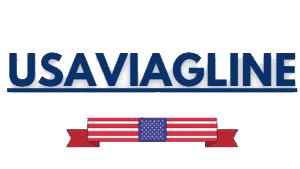BestAdvise4u.com News is a straightforward digital platform that covers tech, lifestyle, and everyday advice. Learn what it offers, how it compares to competitors, and how to use it smartly.
Introduction
BestAdvise4u.com News is an online publication designed for individuals who prefer direct, easy-to-understand information. It doesn’t try to sound overly professional or dramatic. Instead, it focuses on helping readers make sense of daily digital and lifestyle topics.
You’ll find pieces about technology, health, money, and culture — all written shortly and clearly. It’s designed for individuals who want practical information without having to read lengthy reports or technical papers.
What bestadvise4u.com News Does
The website acts as a mix of a news hub and a practical guide center. Its goal is to inform and educate readers about real things that affect everyday life.
Topics often include online safety, financial management, healthy habits, and digital updates. The writing is intended for a general audience rather than specialists.
In short, it provides you with knowledge that you can use right away. That’s why it’s popular with people who want clarity, not complexity.
Why People Use bestadvise4u.com News
There are a few simple reasons people keep visiting this site. First, it’s easy to read. Second, it covers multiple categories instead of focusing on only one niche. Third, it avoids using confusing terms and employs concise sentences.
Most readers say they like how it feels honest and simple. The layout is light, allowing you to read a full piece in just a few minutes. It’s also mobile-friendly, so it works well on phones.
Unlike some sites that drown you in details, this one tells you what you need to know and stops there.
How the Website is Designed
bestadvise4u.com News is built for function. The homepage is plain, the text is readable, and the pages load quickly. The navigation is direct — you don’t have to click through multiple sections to find what you’re looking for.
It’s not a site trying to impress with fancy graphics. It’s more about speed and clarity.
Readers who browse on phones will notice it works smoothly without needing extra adjustments. This is one of its strong points, especially compared to cluttered sites filled with ads.
What Makes It Different from Other News Platforms
Many online news outlets focus heavily on political events or big corporate updates. bestadvise4u.com News does not chase that. Instead, it focuses on lifestyle, health, and practical knowledge.
You won’t find long editorials or opinion columns here. Instead, you’ll see short, factual pieces that tell you what’s happening and why it matters.
This makes it suitable for busy people who only have a few minutes to catch up on updates.
Where big outlets write for analysts and professionals, bestadvise4u.com News writes for the everyday person.
Comparison with Competitors
| Feature | bestadvise4u.com News | TechCrunch | Mashable | DigitalTrends |
|---|---|---|---|---|
| Main Focus | Tech, lifestyle, advice | Startups, funding | Social media & trends | Consumer tech |
| Writing Style | Simple and clear | Business-heavy | Entertainment-based | Product-focused |
| Ad Usage | Limited | High | High | High |
| Update Speed | Moderate | Fast | Fast | Fast |
| Ownership | Independent | Corporate-backed | Corporate-owned | Corporate-owned |
| Readability | High | Moderate | Easy | Easy |
bestadvise4u.com News stands out mainly because ads or investors do not drive it. The others aim for scale and visibility. This site maintains a tighter, more compact structure.
It doesn’t compete on breaking news but focuses on consistent, understandable updates that feel more personal and practical.
Things to Keep in Mind
Even though the site is simple and helpful, there are a few things to consider.
- Articles are brief so that readers can skip deeper analysis.
- Some advice is general and may not apply to every reader’s specific situation.
- Always confirm health or financial details from verified sources.
- It’s a secondary platform, not a replacement for major media outlets.
When used wisely, it’s an excellent way to stay informed about small but significant trends.
Why This Type of Site Works
People today often don’t have time for lengthy news stories. They want clear answers without jargon. bestadvise4u.com News understands behavior and fills the gap.
It’s especially useful for readers who feel overwhelmed by the abundance of information online. The platform simplifies what’s happening and presents it in clear, understandable language.
This type of communication fosters trust because it appears genuine and sincere. It doesn’t try to act smarter than the reader. It just gives what’s needed — no more, no less.
How to Use bestadvise4u.com News Properly
Here’s how to make the most out of the site
- Pick topics that relate to your interests instead of reading everything at once.
- Always check the article date and the writer’s name before sharing information.
- Compare key details with other trusted news sources.
- Treat advice as general guidance, not as expert instruction.
- Use it as a base for learning more from verified outlets.
This way, you’ll benefit from the site’s simplicity without depending on it for every detail.
FAQs
What kind of topics does the site cover
It focuses on tech, finance, lifestyle, and general awareness, written in plain and simple terms.
Is it free to use
Yes, most of its content is freely available to read.
How often are new posts added?
The update schedule is moderate, with fresh articles appearing regularly but not daily.
Can it be trusted for sensitive topics?
It’s a good place for general understanding, but for critical matters such as health or legal issues, it’s best to cross-check with official sources.
Does it work well on mobile devices?
Yes, the site is fully mobile-friendly and loads quickly on most smartphones.
Common Mistakes Readers Make
Some readers rely on a single source for all their information. That’s not smart. Even if bestadvise4u.com News provides solid summaries, no single website can cover every angle perfectly.
Another common mistake is taking general advice too literally. Each person’s situation is different, so it’s always good to confirm before acting on any online suggestion.
The point of this site is to guide you, not make decisions for you.
Conclusion
bestadvise4u.com News is a straightforward and easy-to-use online platform that delivers quick updates across lifestyle, tech, and culture. It’s simple, clean, and made for everyday readers who want clarity without complexity.
While it may not go as deep as major outlets, it serves its purpose well by keeping things brief, readable, and factual. If you use it alongside reliable news sources, it can become a solid part of your daily information routine.
It’s not a flashy website or a news giant, but it’s useful — and in today’s crowded digital world, that’s what really counts.

